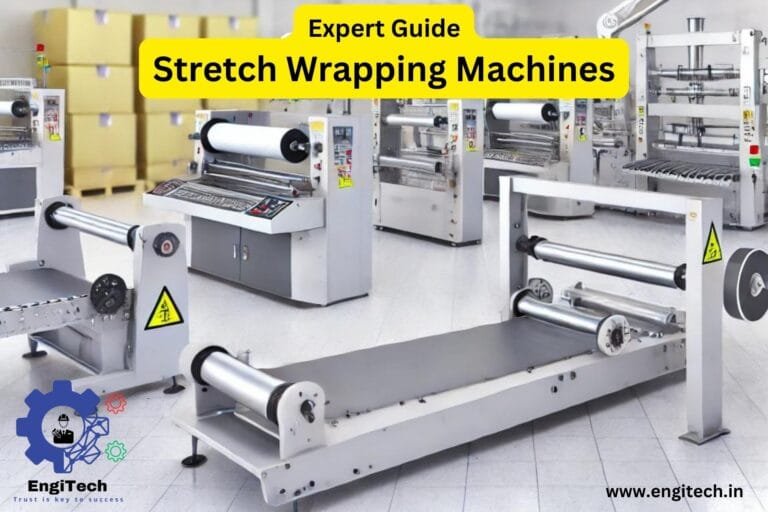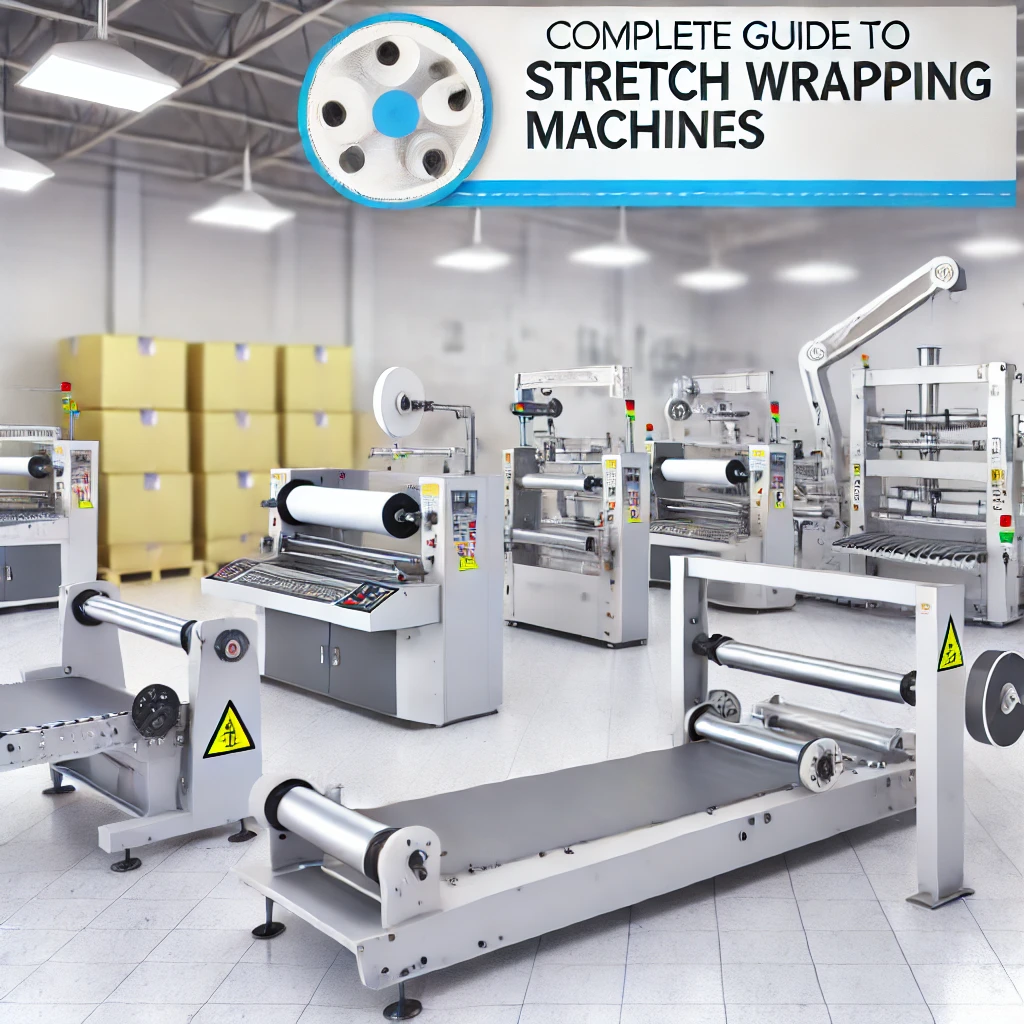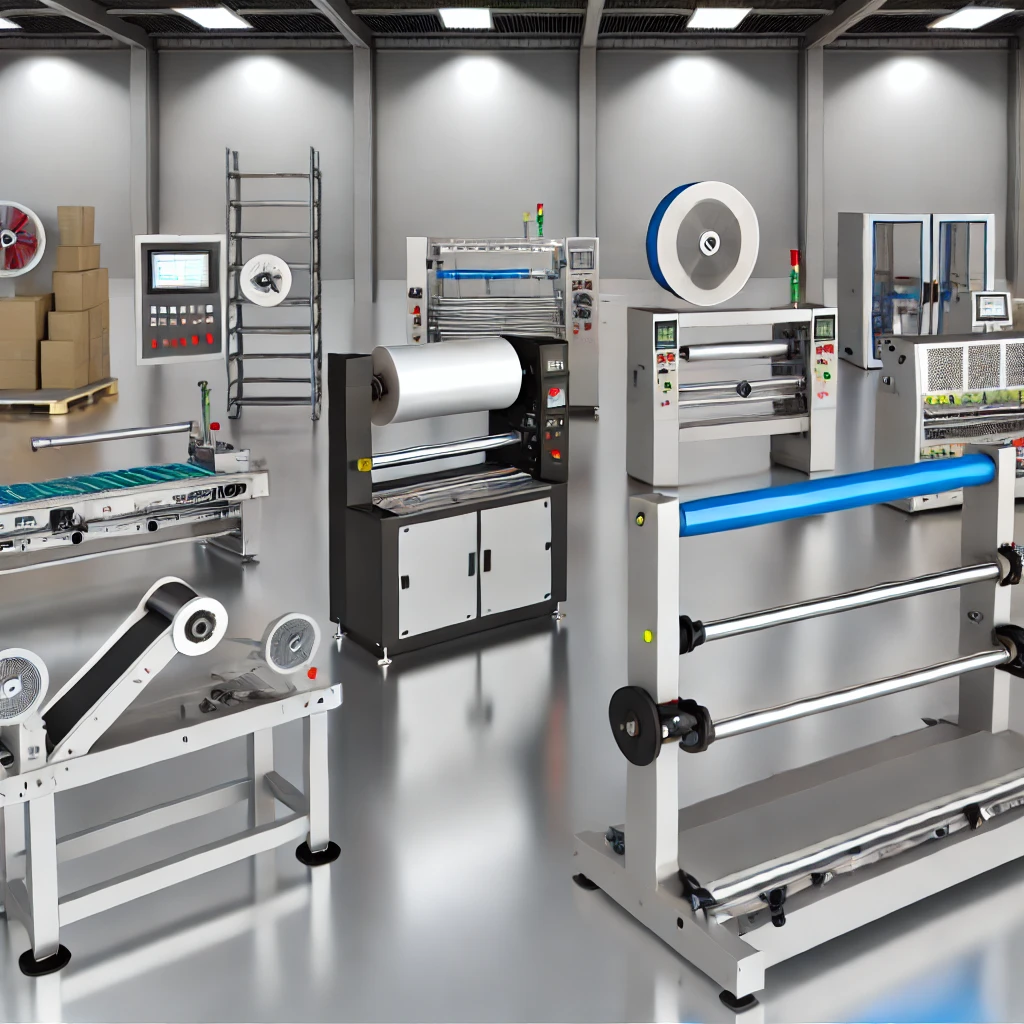
Stretch wrapping machines, also known as stretch wrappers, play a pivotal role in the packaging industry. These machines are essential for securing loads on pallets, ensuring safe transport and storage. They wrap products using stretch film, which tightly secures the items, preventing movement and providing protection from dust, moisture, and damage. In this comprehensive guide, we will explore the various types of stretch wrapping machines, their applications, and benefits, and provide expert insights into choosing the right machine for your needs. This detailed blog post will also cover the latest trends and innovations in stretch wrapping technology.
What Are Stretch Wrapping Machines?
Stretch wrapping machines are devices designed to wrap stretch film around products or pallets. The stretch film, made of highly stretchable plastic, secures the items and holds them tightly together. The process involves placing the pallet or product on a platform, where the machine wraps the film around it. This wrapping method is widely used in industries such as logistics, manufacturing, and retail, providing an efficient way to secure and protect goods during transport and storage.
Types of Stretch Wrapping Machines
Stretch wrapping machines come in various types, each designed to meet specific packaging needs. The main types include:
1. Manual Stretch Wrappers
Manual stretch wrappers are the most basic type of stretch wrapping machines. Operators manually apply the stretch film to the pallet or product, controlling the tension and wrapping pattern.
How They Work: The operator uses a hand-held dispenser to apply the film around the load. The tension is controlled manually, and the film is applied layer by layer.
Applications: These machines are ideal for low-volume packaging operations, small warehouses, and businesses with limited budgets.
Advantages: Manual stretch wrappers are cost-effective and easy to use, requiring minimal training.
Limitations: They are labor-intensive and not suitable for high-volume operations.
2. Semi-Automatic Stretch Wrappers
Semi-automatic stretch wrappers automate some aspects of the wrapping process while still requiring manual intervention. These machines are a step up from manual wrappers and offer greater efficiency.
How They Work: The operator places the pallet on the turntable or conveyor, attaches the film, and initiates the wrapping process. The machine automatically wraps the film around the pallet while the operator controls the number of wraps and tension.
Applications: Suitable for medium-sized businesses and warehouses with moderate packaging needs.
Advantages: Semi-automatic machines increase efficiency and consistency in wrapping compared to manual methods.
Limitations: They still require some manual handling and are not fully automated.
3. Fully Automatic Stretch Wrappers
Fully automatic stretch wrappers handle the entire wrapping process with minimal human intervention. These machines are equipped with automated systems for loading, wrapping, and unloading pallets.
How They Work: Products are automatically loaded onto the machine, and the stretch wrapper applies the film according to preset parameters. The machine can handle multiple pallets continuously, making it ideal for high-volume operations.
Applications: Perfect for large-scale industrial operations, distribution centers, and logistics companies.
Advantages: Fully automatic stretch wrappers offer high-speed operation, consistent wrapping quality, and reduced labor costs.
Limitations: They require a higher initial investment and are more complex to set up and maintain.
4. Rotary Arm Stretch Wrappers
Rotary arm stretch wrappers use a rotating arm to wrap the film around the pallet. The pallet remains stationary while the arm moves around it, applying the film.
How They Work: The rotary arm rotates around the stationary pallet, applying the stretch film. This method is particularly useful for wrapping heavy or unstable loads.
Applications: Ideal for wrapping heavy, unstable, or irregularly shaped loads.
Advantages: They provide consistent wrapping without shifting the load, making them suitable for delicate or heavy products.
Limitations: Rotary arm wrappers require more space and may be more expensive than other types.
5. Orbital Stretch Wrappers
Orbital stretch wrappers wrap products horizontally and are used for items that are too long or awkward to wrap on a traditional turntable.
How They Work: The product is fed into the machine, and the film wraps horizontally around it. This method is commonly used for products like pipes, doors, and windows.
Applications: Suitable for long or awkwardly shaped items that require horizontal wrapping.
Advantages: Orbital stretch wrappers provide efficient wrapping for non-standard items, ensuring secure packaging.
Limitations: These machines are specialized and may not be suitable for standard palletized loads.


Key Features and Components of Stretch Wrapping Machines
Understanding the key features and components of stretch wrapping machines is crucial for selecting the right equipment. Key components include:
- Turntable: Used in many stretch wrappers, the turntable rotates the pallet or product, allowing the film to wrap evenly around it.
- Film Delivery System: Controls the tension and application of the stretch film, ensuring consistent wrapping.
- Control Panel: Allows operators to set and adjust parameters such as the number of wraps, film tension, and wrapping speed. Advanced machines may feature programmable settings and touchscreens.
- Film Carriage: Holds the stretch film roll and moves up and down the mast to apply the film evenly around the load.
- Mast: Supports the film carriage and provides the necessary height to wrap tall loads.
- Sensors and Safety Features: Modern machines are equipped with sensors and safety features to prevent accidents and ensure smooth operation.
Applications of Stretch Wrapping Machines
Stretch wrapping machines are versatile and used across various industries for multiple applications:
- Logistics and Warehousing: Stretch wrapping is essential for securing loads on pallets, preventing shifting during transport, and protecting products from dust and moisture.
- Manufacturing: Manufacturers use stretch wrappers to bundle products, secure parts, and prepare items for shipping.
- Retail and Consumer Goods: Stretch wrapping helps protect consumer goods, electronics, and appliances, ensuring they arrive at their destination in pristine condition.
- Food and Beverage: Stretch wrapping machines are used to bundle products like bottled beverages, canned goods, and packaged foods, providing protection and stability.
- Construction and Building Materials: Companies use stretch wrappers to secure building materials, pipes, and other construction items for transport and storage.
Benefits of Using Stretch Wrapping Machines
- Product Protection: Stretch wrapping provides a protective barrier against dust, moisture, and physical damage, ensuring products arrive safely at their destination.
- Cost Efficiency: Using stretch film is cost-effective compared to other packaging methods, reducing material and labor costs.
- Enhanced Stability: Stretch wrapping stabilizes loads, preventing movement during transport and reducing the risk of product damage.
- Versatility: Stretch wrappers can accommodate various load sizes and shapes, making them suitable for a wide range of products.
- Time Savings: Automated and semi-automated stretch wrappers speed up the packaging process, increasing efficiency and productivity.
- Environmental Benefits: Stretch film is recyclable, and modern machines use advanced film technologies that reduce waste and environmental impact.
Key Considerations When Choosing a Stretch Wrapping Machine
When selecting a stretch wrapping machine, consider the following factors:
- Volume of Production: Determine the number of pallets or products you need to wrap daily. Manual machines are suitable for low volumes, while fully automatic machines are best for high-volume operations.
- Load Size and Weight: Consider the size and weight of the products you need to wrap. Ensure the machine can handle your specific requirements.
- Type of Products: Different products may require different wrapping techniques. For example, heavy or fragile items may benefit from rotary arm or orbital wrappers.
- Budget: Factor in the initial investment and ongoing operational costs. While fully automatic machines offer high efficiency, they require a higher upfront investment.
- Space Availability: Consider the available space in your facility. Some machines, like rotary arm wrappers, require more space than others.
- Film Type and Specifications: Choose the appropriate stretch film based on your product’s protection needs and the machine’s specifications.
- Maintenance and Support: Ensure reliable after-sales support and easy access to spare parts. Regular maintenance is crucial for the machine’s longevity and performance.
Expert Insights and Tips
- Proper Film Tension: Ensure the film is applied with the correct tension to avoid tearing or inadequate wrapping. Adjust the tension settings according to the load type and film specifications.
- Regular Maintenance: Schedule regular maintenance checks to keep the machine in optimal condition. This includes cleaning, lubricating, and inspecting all components.
- Operator Training: Proper training for operators is essential to ensure safe and efficient machine use. This includes understanding the control panel, adjusting settings, and handling different load types.
- Film Selection: Use high-quality stretch film that suits your products and wrapping needs. Consider factors like thickness, stretchability, and clarity.
- Sustainability: Consider using eco-friendly stretch films and recycling programs to minimize environmental impact.
Conclusion
Stretch wrapping machines are indispensable tools in modern packaging, offering numerous benefits like product protection, cost efficiency, and enhanced stability. By understanding the different types of stretch wrappers, their applications, and key considerations for selection, businesses can make informed decisions that align with their packaging needs and budget.
Whether you’re a small business or a large industrial operation, investing in the right stretch wrapping machine can significantly improve your packaging efficiency and product protection. For more detailed information and expert advice on selecting the best stretch wrapping machine for your needs, visit EngiTech.in. Stay informed about the latest advancements in stretch wrapping technology and best practices for optimizing your packaging processes.
This comprehensive guide covers everything you need to know about stretch wrapping machines, from their types and applications to benefits and expert tips. Whether you’re looking to improve your packaging efficiency, protect your products, or reduce costs, understanding these machines’ features and capabilities will help you make the best choice for your business.